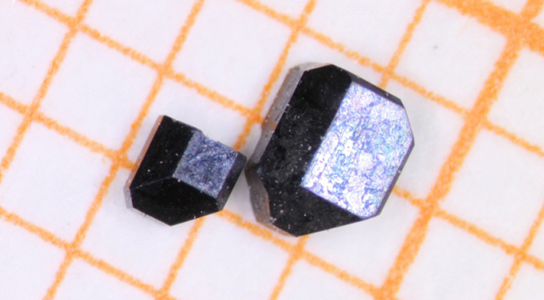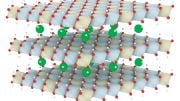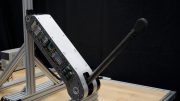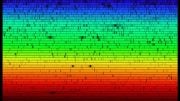
Despite being insulators inside, samarium hexaboride crystals can conduct electricity on their surface. Credit: Johnpierre Paglione
Samarium hexoboride, a compound that had been poorly understood and that can gain conducting properties at very low temperatures, maybe a topological insulator in its bulk form, conducting electricity on its surface while the rest of the material behaves like an insulator.
The scientists published their findings in three papers in preprints on arXiv. This material could provide a boon for quantum physicists and electronic device makers.
Theorists proposed the existence of such materials in 2005 and hoped to study the quantum effects that should emerge from such materials, and explore applications in low-power electronics as well as quantum computing. But topological insulators have proven difficult to make.
Researchers at the University of California, Irvine, reported seeing remarkably fast-moving electrons on the surface of SmB6 crystals, which is a sign of a superb surface conductor. Five days later, researchers at the University of Maryland in College Park reported measurements tracing the path of electrons injected into SmB6 samples as they cooled. These results indicate that the material is insulating in its interior at temperatures below 30˚K (-243˚C or -406˚F).
Prior to those two findings, a team from the University of Michigan in Ann Arbor and from the University of California, Irvine, described their measurements of conductivity through the surface and bulk of the material. They found that the conducting behavior persists despite imperfections and impurities, as they expected from a true topological insulator.
It was predicted that SmB6 could act as a topological insulator. This prediction stemmed from the study of Kondo insulators, which retain some small amount of conductivity when they are cooled to a few degrees above absolute zero.
As a topological insulator, the quantum properties of the material would be such that electrons cannot flow through it freely, as an ordinary conductor, except on the material’s surface. This could mean that insights gathered from SmB6 and other Kondo insulators could carry over to all topological insulators.
On the surface of SmB6, the electrons on the outer shells of the samarium atoms interact strongly with each other, resulting in a coordinated motion. This could mean that the material could be useful in creating exotic quantum effects, like magnetic monopoles and Majorana fermions, which are quasiparticles useful for quantum computing.
References:
“Surface Hall Effect and Nonlocal Transport in SmB6: Evidence for Surface Conduction” by D. J. Kim, S. Thomas, T. Grant, J. Botimer, Z. Fisk and Jing Xia, 6 November 2013, Scientific Reports.
DOI: 10.1038/srep03150
“Hybridization, Inter-Ion Correlation, and Surface States in the Kondo Insulator SmB6 by Xiaohang Zhang, N. P. Butch, P. Syers, S. Ziemak, Richard L. Greene, and Johnpierre Paglione, 14 February 2013, Physical Review X.
DOI: 10.1103/PhysRevX.3.011011
“Low-temperature surface conduction in the Kondo insulator SmB6” by Steven Wolgast, Çağlıyan Kurdak, Kai Sun, J. W. Allen, Dae-Jeong Kim and Zachary Fisk, 27 November 2013, Physical Review B.
DOI: 10.1103/PhysRevB.88.180405








Be the first to comment on "Samarium Hexoboride Behaves Like a Topological Insulator"